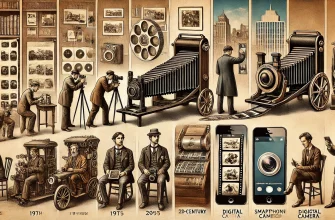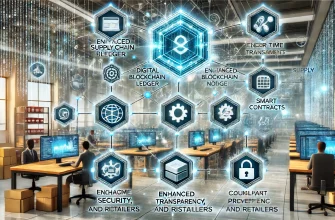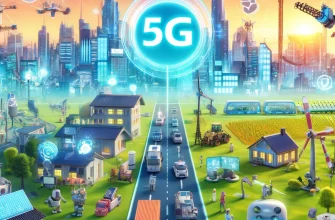Sustainable technology innovations are crucial for addressing the pressing environmental challenges of our time. As the world grapples with climate change, resource depletion, and pollution, the development and adoption of sustainable technologies offer promising solutions to create a more sustainable and resilient future. This article explores some of the most impactful sustainable technology innovations across various sectors, highlighting their benefits and potential to transform our world.
Renewable Energy Technologies
- Solar Power:
- Photovoltaic Cells: Solar photovoltaic (PV) cells convert sunlight directly into electricity. Advances in PV technology have led to higher efficiency and lower costs, making solar power a viable option for both residential and commercial energy needs.
- Concentrated Solar Power (CSP): CSP systems use mirrors or lenses to concentrate sunlight onto a small area to generate heat, which is then used to produce electricity. CSP plants can store energy in the form of heat, providing a reliable power supply even when the sun is not shining.
- Wind Energy:
- Onshore and Offshore Wind Turbines: Wind turbines harness the kinetic energy of wind to generate electricity. Offshore wind farms, in particular, have gained traction due to stronger and more consistent wind speeds over the ocean, leading to higher energy output.
- Floating Wind Turbines: Innovations in floating wind turbine technology allow turbines to be placed in deeper waters where wind speeds are higher, expanding the potential for wind energy generation.
- Hydropower:
- Run-of-River Hydropower: Unlike traditional dam-based hydropower, run-of-river systems generate electricity without significantly altering the flow of rivers. This minimizes environmental impact while providing a steady source of renewable energy.
- Pumped-Storage Hydropower: This technology stores energy by pumping water to a higher elevation during periods of low electricity demand and releasing it to generate electricity during peak demand.
- Geothermal Energy:
- Enhanced Geothermal Systems (EGS): EGS technology involves enhancing the permeability of underground rocks to extract heat from deep within the Earth. This allows for the generation of geothermal energy in areas without naturally occurring geothermal reservoirs.
Energy Storage Solutions
- Lithium-Ion Batteries:
- Grid-Scale Storage: Advances in lithium-ion battery technology have made it possible to store large amounts of energy from renewable sources, providing grid stability and ensuring a reliable power supply.
- Electric Vehicles (EVs): Lithium-ion batteries are the backbone of EV technology, offering higher energy density and longer driving ranges, making electric transportation more feasible and attractive.
- Solid-State Batteries:
- Safety and Efficiency: Solid-state batteries use solid electrolytes instead of liquid ones, offering higher energy density, faster charging times, and improved safety by reducing the risk of fires.
- Flow Batteries:
- Scalability and Longevity: Flow batteries store energy in liquid electrolytes contained in external tanks, allowing for easy scalability and long cycle life, making them ideal for large-scale energy storage applications.
Sustainable Transportation Technologies
- Electric Vehicles (EVs):
- Battery Advancements: Innovations in battery technology are extending the driving range of EVs and reducing charging times, making them more practical for everyday use.
- Charging Infrastructure: The development of fast-charging networks and wireless charging technology is addressing range anxiety and making EV adoption more convenient.
- Hydrogen Fuel Cells:
- Zero Emissions: Hydrogen fuel cells produce electricity through a chemical reaction between hydrogen and oxygen, with water vapor as the only byproduct. This makes them an attractive option for reducing greenhouse gas emissions in transportation.
- Shared Mobility Solutions:
- Ride-Sharing and Carpooling: Technology-enabled ride-sharing and carpooling services reduce the number of vehicles on the road, decreasing traffic congestion and emissions.
- Micromobility: Electric scooters, bikes, and other micromobility solutions provide convenient and sustainable alternatives for short-distance travel in urban areas.
Sustainable Building Technologies
- Green Building Materials:
- Low-Carbon Concrete: Innovations in concrete production, such as using recycled materials and carbon capture techniques, are reducing the carbon footprint of construction.
- Cross-Laminated Timber (CLT): CLT is a sustainable building material made from layers of wood glued together. It offers high strength, low weight, and reduced environmental impact compared to traditional building materials.
- Energy-Efficient Building Design:
- Passive House Standards: Buildings designed to passive house standards use minimal energy for heating and cooling through high levels of insulation, airtight construction, and efficient ventilation systems.
- Smart Thermostats and Lighting: Smart home technologies, such as programmable thermostats and LED lighting, optimize energy use and reduce waste.
- Green Roofs and Walls:
- Urban Biodiversity: Green roofs and walls provide insulation, reduce urban heat islands, and support biodiversity by creating habitats for plants and wildlife in urban environments.
Waste Management and Circular Economy
- Recycling Technologies:
- Advanced Sorting Systems: Innovations in automated sorting technologies, such as AI and robotics, improve the efficiency and accuracy of recycling processes, reducing contamination and increasing recycling rates.
- Chemical Recycling: Chemical recycling breaks down plastic waste into its chemical components, allowing for the production of new plastics without degrading quality.
- Waste-to-Energy:
- Anaerobic Digestion: This process converts organic waste into biogas and digestate, providing a renewable energy source and reducing landfill waste.
- Incineration with Energy Recovery: Modern waste-to-energy plants incinerate waste to generate electricity and heat while capturing and treating emissions to minimize environmental impact.
- Circular Economy Models:
- Product-as-a-Service: Companies are adopting business models where products are leased rather than sold, encouraging the design of durable, repairable, and recyclable products.
- Extended Producer Responsibility (EPR): EPR policies hold manufacturers accountable for the entire lifecycle of their products, incentivizing sustainable design and recycling efforts.
Agricultural Innovations
- Precision Farming:
- Drones and Sensors: Drones and IoT sensors provide real-time data on crop health, soil conditions, and weather patterns, enabling farmers to optimize resource use and increase yields.
- Automated Machinery: Autonomous tractors and machinery reduce labor costs and increase efficiency in planting, harvesting, and managing crops.
- Sustainable Crop Management:
- Integrated Pest Management (IPM): IPM combines biological, cultural, and chemical methods to control pests in an environmentally friendly way.
- Agroforestry: Integrating trees and shrubs into agricultural landscapes improves soil health, sequesters carbon, and enhances biodiversity.
- Vertical Farming:
- Urban Agriculture: Vertical farming systems use stacked layers to grow crops in controlled environments, reducing the need for land and water while enabling year-round production in urban areas.
Conclusion
Sustainable technology innovations are at the forefront of efforts to create a more sustainable and resilient future. From renewable energy and sustainable transportation to green building and waste management, these technologies offer promising solutions to the environmental challenges we face. By embracing and investing in sustainable technologies, we can pave the way for a greener, healthier, and more prosperous world for future generations.








